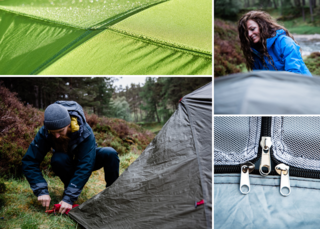Whether you’re backpacking the trails through rugged landscapes, wild camping beneath the stars, or pitching up in a bustling campsite with family and friends, your tent quickly becomes your home away from home. It’s your sanctuary against unpredictable weather, a place to rest after long days of adventure, and a hub for making memories in the great outdoors. Because your tent plays such a vital role in every trip, it’s well worth investing a little time and care to keep it in prime condition.
A well-cared-for tent doesn’t just provide reliable shelter—it maintains its waterproofing, resists wear and tear, and stands strong against the elements season after season. Proper tent care can be the difference between a comfortable night’s sleep and a soggy, stressful experience, ensuring that every adventure is one to remember for all the right reasons.
In this expert guide, we’ll share essential tent care tips and techniques drawn from years of outdoor experience and technical know-how. From simple daily habits to in-depth maintenance advice, you’ll learn how to protect your tent, extend its lifespan, and keep it performing at its best—so you and your tent can enjoy countless adventures together for many years to come.







